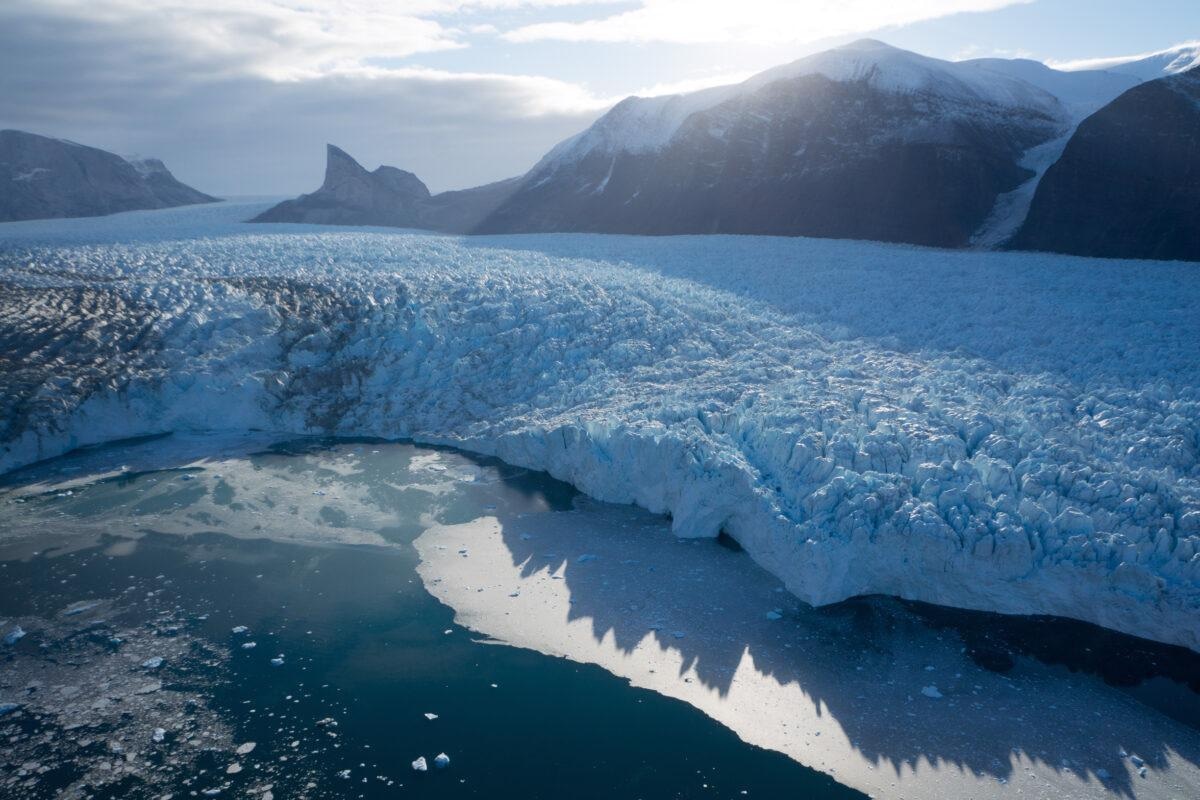Greenland’s glaciers are the front line of climate change and could be crucial in forecasting the rise in global sea level, but so far, science has been unable to solve the mystery of what goes on at the underwater face of these glaciers.
 The glacier Kangerlussuup Sermia in Greenland, the focus of new underwater exploration led by UT Austin. Image Credit: Denis Felikson.
The glacier Kangerlussuup Sermia in Greenland, the focus of new underwater exploration led by UT Austin. Image Credit: Denis Felikson.
In 2023, that could change. Scientists at The University of Texas at Austin will guide a bold new voyage that will explore three of Greenland’s glaciers using a submersible robot. It will be the first time Greenland’s glaciers — which compose the second-largest ice sheet in the world — will be observed up-close underwater.
Designed to withstand ice-covered seas, the remotely worked vehicle Nereid Under Ice (NUI) will endure riptides and icebergs to go within feet of the glaciers, gather data and samples from their underwater surroundings and return. NUI was produced by project partner the Woods Hole Oceanographic Institution (WHOI).
Glacial ice is actually not the main focus of the researchers, rather it is the natural sand walls — or moraines — that buttress the glaciers and are believed to naturally, but unsteadily, stabilize the ice sheet. Their findings will expose what is shoring up glaciers throughout the entire Greenland ice sheet, which could pave the way to more precise model projections for future sea-level rise.
The big uncertainty in Greenland’s contribution to sea-level rise is how fast the ice sheet is going to lose mass. We know how much sea level is stored in the ice sheet, we know climate is warming and changing the ice sheet, but what we don’t know is the rate at which these glaciers will contribute to sea-level rise.
Ginny Catania, Professor, Jackson School of Geosciences, The University of Texas at Austin
Ginny Catania is the one leading the voyage. The project is financially supported by the W.M. Keck Foundation, one of the largest philanthropic organizations in the United States, which aids outstanding engineering, science and medical research.
The expedition will explore three glaciers in western Greenland that are located in the path of warming Atlantic waters but have reacted to climate change in various ways.
Since 2000, Kangilliup Sermia has undergone only minor retreat, Umiammakku Sermiat retreated swiftly before stabilizing again in 2009, and Kangerlussuup Sermia has stayed mostly unchanged by warming.
They provide a nice test case for ideas about what’s building the moraines and how those processes may vary between location.
Ginny Catania, Professor, Jackson School of Geosciences, The University of Texas at Austin
The data could also be vital for future geoengineering projects. Some researchers have recommended building synthetic moraines as a way of gaining time while the world moves toward low-carbon energy sources.
NUI will travel underwater to each glacier’s face, mapping the topography of the ocean floor as it goes. After getting to its target site, operators aboard a support ship close by will remotely guide the manipulator arm of the robot to retrieve sediment cores from the glacier’s moraines. The vehicle will also collect samples from the enormous sediment plumes jetting from below the glaciers.
Project co-lead Mike Jakuba, a senior engineer at WHOI stated that the robot was designed with layers of integral redundancy, including battery packs, numerous thrusters and navigation systems to allow it to function in challenging conditions far from its support ship.
Its main communication line is a 10-mile-long, hair-thin optic fiber linking NUI to its support ship, enabling operators to regulate its arm and cameras. The robot can still be driven using underwater acoustics if the fiber breaks and automatically returns to a pickup zone if all communication flops.
Jakuba said the voyage will help researchers comprehend the important link between the world’s oceans and ice sheets.
With NUI, the vision from the beginning was to provide a system that would project human presence into environments like this that demand greater access if we’re going to get a better handle on how the planet is changing.
Mike Jakuba, Project Co-Lead and Senior Engineer, Woods Hole Oceanographic Institution
The voyage is planned for the midsummer of 2023. Partner institutions include the University of Florida, the University of Idaho, and the University of Texas Institute for Geophysics (UTIG), an expeditionary research unit of the UT Jackson School, where Catania is employed.
“This is high-risk, high-reward science, but it’s exactly the kind of bold step needed to tackle the pressing and societally relevant questions about climate change and geohazards,” said Demian Saffer, director of UTIG. “If it succeeds, it could transform our understanding of sea-level rise.”